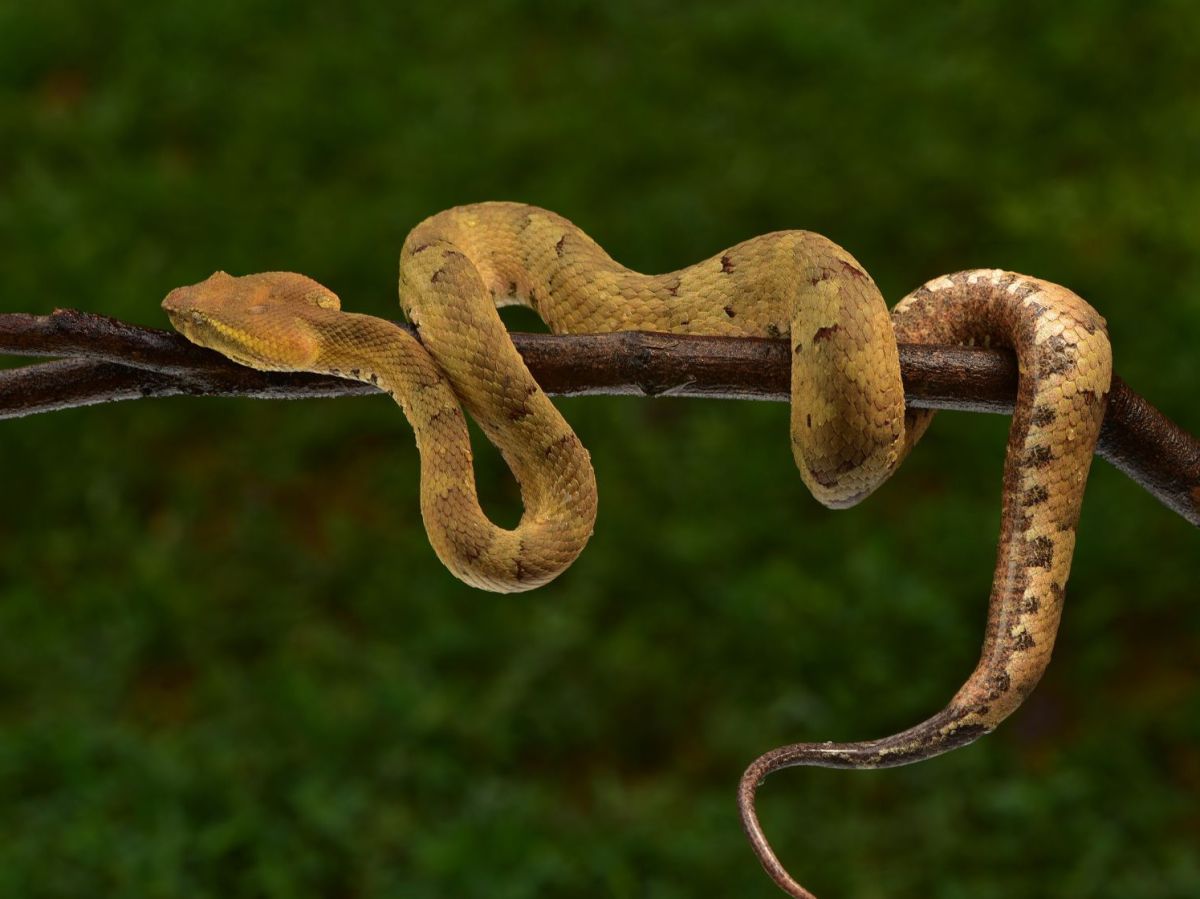Love them or hate them, feared by many, it is snakes. The Sidewinder is the fastest on planet Earth, moving at an impressive 29 km per hour, and is a venomous pit viper from the southwest USA and northwest Mexico. Rather than the standard wriggly movement, the sidewinder repeatedly uses its body to carve indents in the sand and uses the ridges it creates to push itself along, with explosive power.
I feel an overwhelming need to watch to watch TV programmes about snakes – I don’t really like them, but they are fascinating to watch.
They normally have only one functional lung
Boas and pythons are the exceptions, as they have two functional lungs, but if you've ever choked on a mouthful of food, you might understand the challenges of eating and breathing at the same time. What if you couldn't chew your food, but chug down meals greater than your own body mass in a single sitting? What if, before swallowing your giant meal, you also had to squeeze it to death? Without any arms?
Snakes evolved an air tube, called the glottis, in the bottom of their mouth that allows them to keep breathing while they're swallowing. Unlike humans and other mammals, snakes don't possess a diaphragm to assist with their breathing. Instead, they use their ribs, and in between each rib are muscles, which help the ribs contract and expand the lungs to get air in and out. Experts found that snakes can selectively move different sections of their rib cage in order to ventilate the lungs when swallowing large prey.
Ladder Snake
Thankfully, the Sidewinder can’t be found in Portugal, but we have our share of snakes, and they are collectively called ‘cobra’ by the Portuguese. They are certainly not cobras, it’s just the Portuguese word for ‘snake’ - so no need for alarm.
One of Portugal’s most common snakes is the Ladder Snake, a non-venomous snake endemic to most of Europe, and we have only two vipers that might pose a small threat to humans (and of course pets) - the Seoane viper (vipera seoanei) and the horned viper (vipera latastei). The bites, although rarely fatal in adults, can be dangerous in children or vulnerable people, and could include anything from local pain to serious complications. Most snake bites are caused by people trying to catch and handle them as opposed to being stalked or hunted by them. Having said that, it would be wise to keep away from the business end of any snake, and seek urgent medical attention after a bite, whether the victim be human or a pet! It’s always possible that someone could have an allergic reaction to a bite, in the same way as someone might react to a bee sting, so seeking medical help is important.
Last year a funny thing happened here in my house. Behind our TV is the usual mangle of cables and wires, and when one of the ‘cables’ began to move, our dogs sat up and paid attention – it was a skinny snake that had managed to get indoors between the gap in the sliding wooden doors. To be honest, I didn’t stop to find out which sort of snake it was, we just poked around with the fire tongs until it made its way out the way it had entered. A close encounter of a slithery kind, and it had a remarkably loud hiss for a creature with no voice.
What they eat
They are carnivores, but their diet depends on their species. Some eat warm-blooded prey such as rodents, birds or even rabbits, others eat insects, frogs, toads, eggs, other reptiles, fish, earthworms, or slugs. I wondered if they eat snails, as there seems to be plentiful amounts around - and they do. Known as caracóis in Portuguese, to extract them from their shells, snakes push their lower jaws into the shell and grasp the flesh with their curved teeth. These snails are a delicacy in Portugal, and the ‘Há caracóis’ (snails are available) notice seen outside a restaurant means the snakes missed out on a snack!
Marilyn writes regularly for The Portugal News, and has lived in the Algarve for some years. A dog-lover, she has lived in Ireland, UK, Bermuda and the Isle of Man.















Snap! Last week I was about to take a shower when I noticed that a snake had curled itself around my hand support and regarding my ageing body with an indifferent stare. There was no time for recourse to my handbook of Portuguese reptiles to judge whether or not it was venemus. So I soaked a towel which enveloped it and enabled a quick transfer to a cardboard box and then a transfer to the orchards; there to join the hedgehogs, mice, frogs and other garden menagerie. With a slither and hiss, Roberto Cavaleiro
By Cavaleiro R. from Other on 06 Jun 2025, 10:47